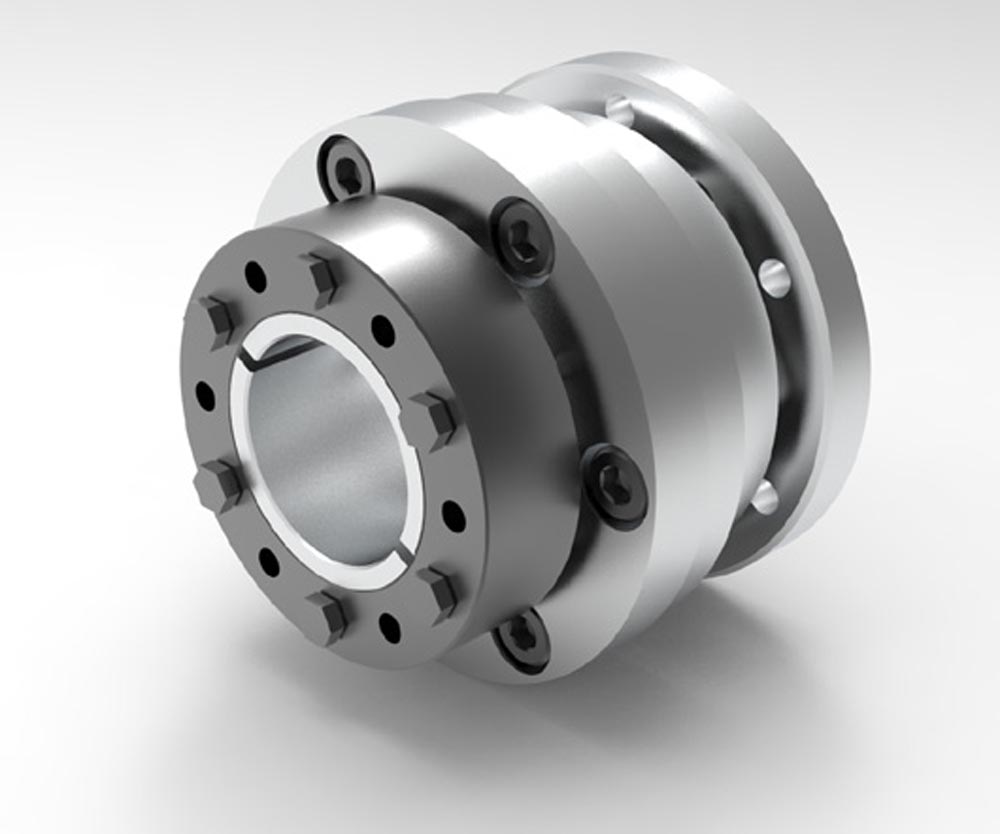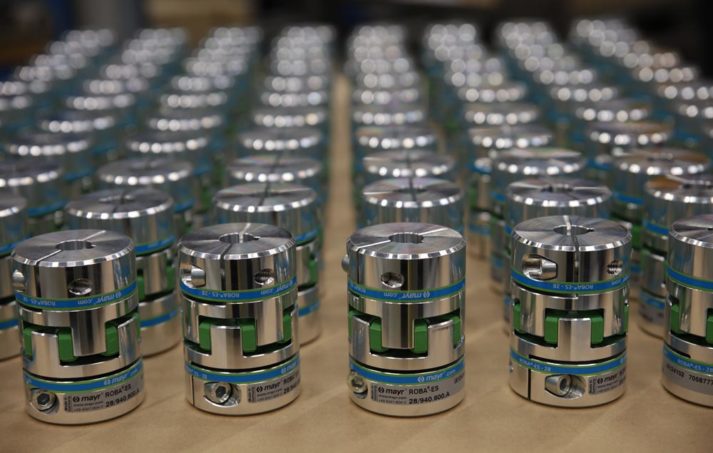Easy Integration
Mayr components offer flexibility and guidance in robotic and automation applications
There is no compromise to safety in robotic applications. Lightweight robots or collaborative robots (cobots) are capable of complex and unexpected movements and need to stop immediately ensuring the safety of human operators. This is where smart couplings and smart brakes provide intelligent flexibility and guidance.
For this reason, robot arms must come to a standstill as quickly as possible in the event of an emergency or safety stop and must not descend in an uncontrolled manner after the power is switched off or in the event of a power failure.
Precision-Based Drive Technology
Robotics applications require a high degree of precision; gripper arms, for example, must be positioned exactly. Shaft couplings from Mayr Power Transmission therefore guarantee a backlash-free, precise connection across all coupling types: this applies to steel disk couplings as well as to elastomer or metal bellows couplings.
These couplings are also optimized for installation space and are very power-dense. All these requirements are covered by Mayr’s standard modular system. Users can put together the right product with just a few clicks using the company’s configurator. In addition, unique designs are also possible for special requirements. In general, our experience shows that no uniform standard has yet been established in the robotics and automation sector. Mayr has a wide variety of coupling variants currently in use.
We started making our shaft couplings ‘smart’ more than 15 years ago. The idea at the time was that shaft couplings are needed in every drivetrain. This means that they are deployed right where the action is, so to speak.
What if a coupling that was already there could now ‘talk’ and provide information about its status? Instead of adding complex measuring flanges or similar devices to the drivetrain, we have equipped the couplings with integrated sensors. This saves space and additional components.
Advanced Sensor Technology
This approach is particularly attractive in the field of process monitoring, where both accuracy and economic efficiency play an important role. We deliberately set ourselves apart from measurement technology and measurement systems from the testing environment, which pursue a different objective.
The sensor technology of the smart couplings helps to reduce or completely avoid faults and downtimes. This is because monitoring in the drivetrain makes it possible to detect faults and wear that are creeping up on you at an early stage and then act with foresight. The right wear parts can also be ordered in advance when planning maintenance periods, for example. This reduces the time required for maintenance and thus the overall downtime of the system. Especially changing vibration patterns or torques in unchanging process sequences are ideal signals or indicators. Load conditions that are recorded by the sensors (torque/accelerations) in the drivetrain also enable the operator of the system to carry out the maintenance interval earlier or later if necessary and to plan better. In addition to the service life of the machine, the output increases and the quality of the product can also be improved if necessary.

The new torque measuring shaft coupling ROBA-drive-checker for permanent condition monitoring of machines and systems.
From Industrial to Robotic Applications
Today, all users want to know about torques in the drivetrain. However, this only works if there is enough space for implementation. This quickly leads to costs again. We are trying to reduce the costs significantly. The focus of development is on the interface. Today, the ROBA-drive-checker is a new component in the proven modular system of the backlash-free disk pack coupling ROBA-DS. The core elements are the Multi-Gateway and the ROBA-drive-checker sleeve. As all connection options of the ROBA-DS steel disk pack coupling are available, this process monitoring system can be easily integrated into many existing applications, including in the field of robotics. Furthermore, a connection to EAS safety clutches is also possible.
In the past, machine maintenance was carried out according to a relatively rigid schedule. Superfluous maintenance or cleaning was also carried out, simply because it was their turn. Today, changes in torque provide information about the degree of contamination, for example. Maintenance is therefore targeted, only where necessary, planned, and efficient. Maintenance cycles are becoming longer or more individualized, downtimes shorter.

ROBA-DS steel disk couplings for robotic applications.
Single-Source Benefits
As a drive technology specialist, we can evaluate customer applications on a system-open basis. As we cover all common designs (steel disk, elastomer, and metal bellows couplings) with our large portfolio, we can advise customers independently and with a focus on the respective application. But even beyond this—across several machines—the customer needs fewer suppliers overall, as we also have safety brakes and overload clutches in our range. We have the expert knowledge in-house, so we do not have to rely on external know-how. With the new ROBA-drive-checker, this is expressed in concrete terms: the user retains complete control over the data transferred from the sleeve to the Multi-Gateway. External cloud systems or third-party software are not required. The ROBA-drive-checker is a 100 percent development of Mayr Power Transmission. The company supplies the system as a complete package from a single source.
High-speed applications
Based on our tried-and-tested ROBA-DS steel disc coupling, we have developed a weight-optimized version made of aluminium with unchanged power density. This is intended for high-speed applications, for example in the field of test bench technology. We are already looking forward to the official presentation of this new development.







